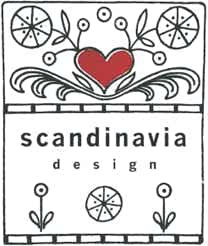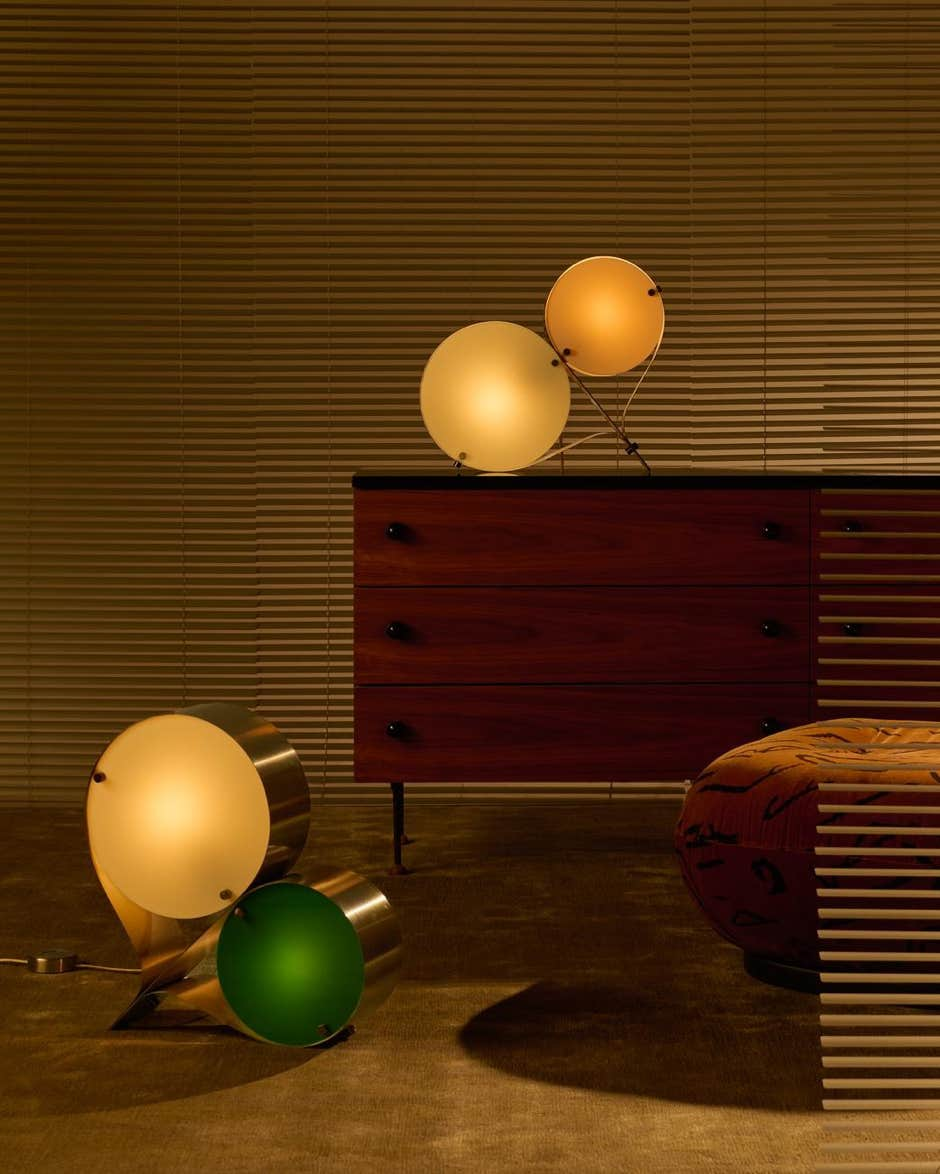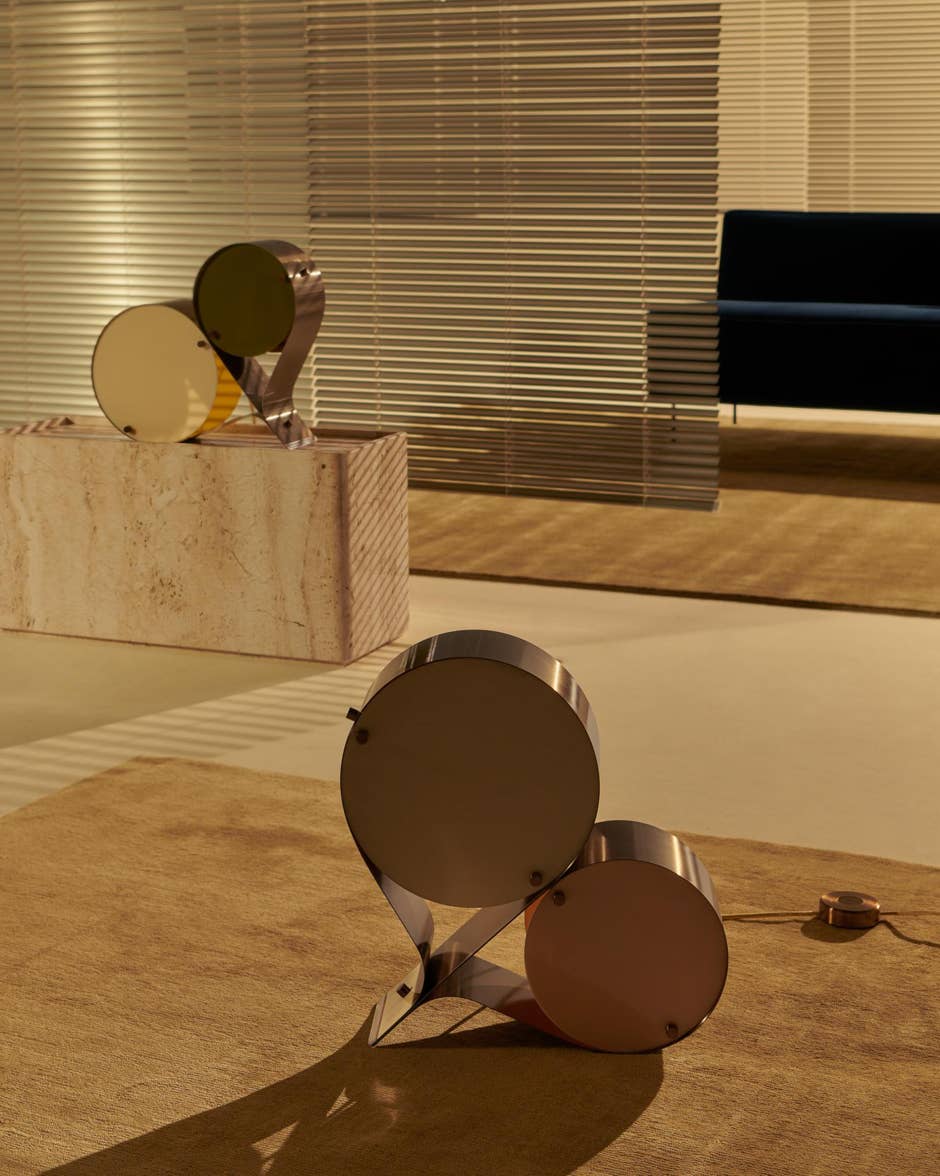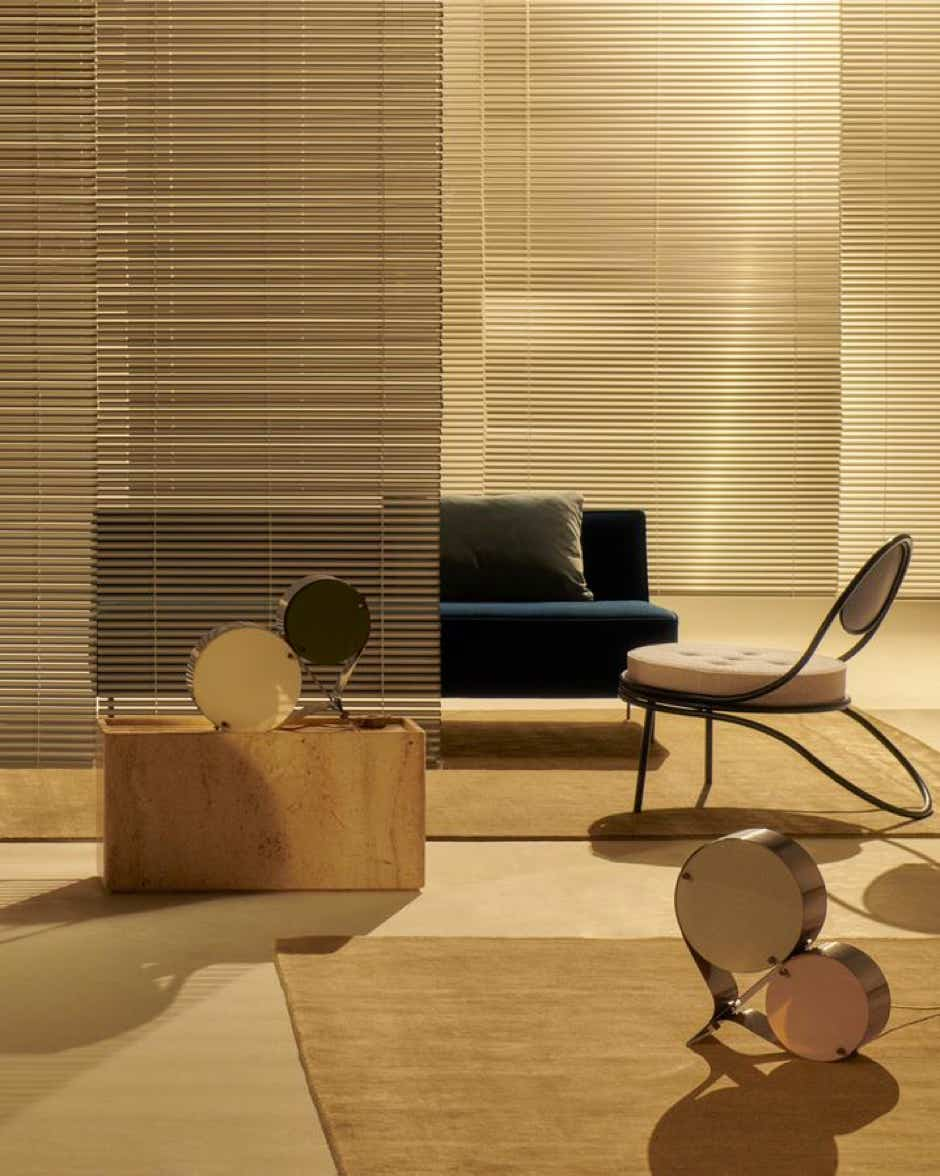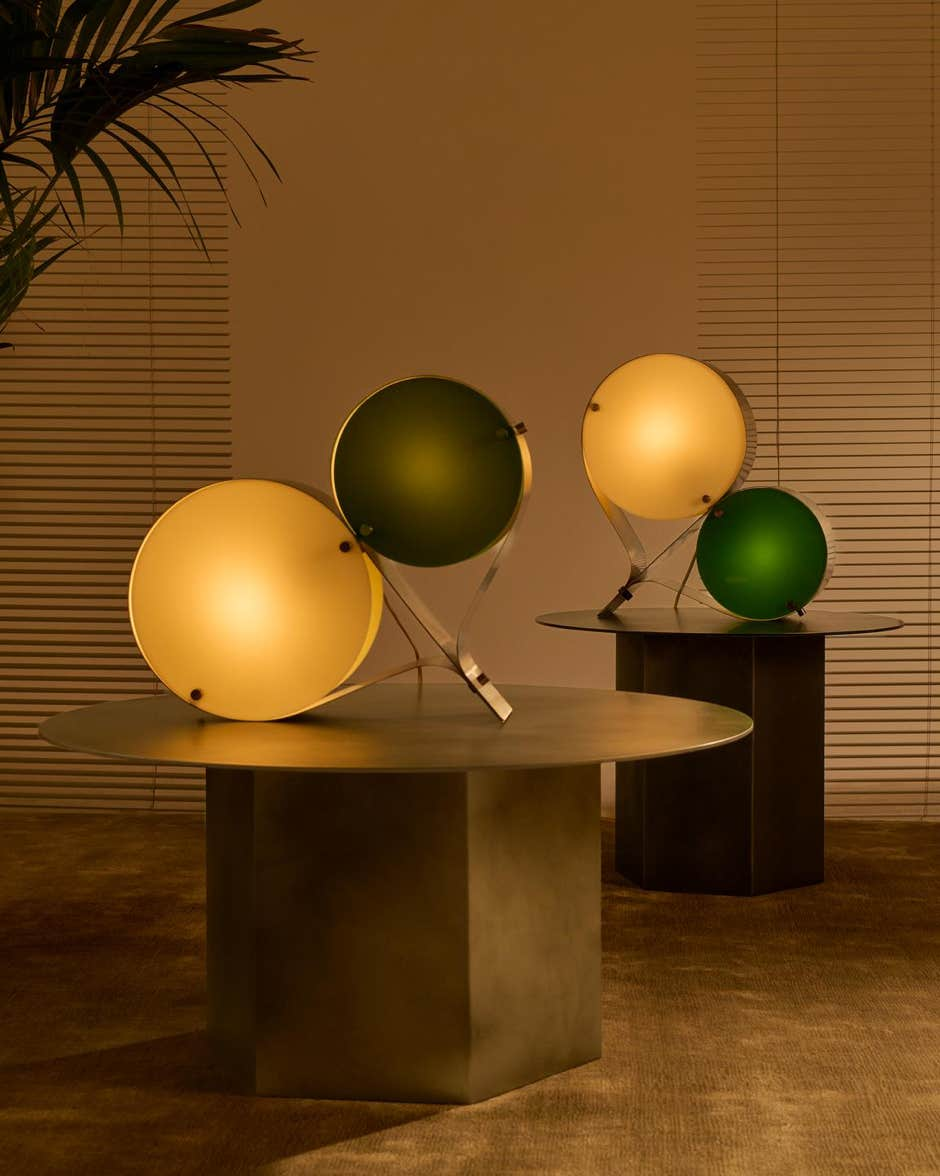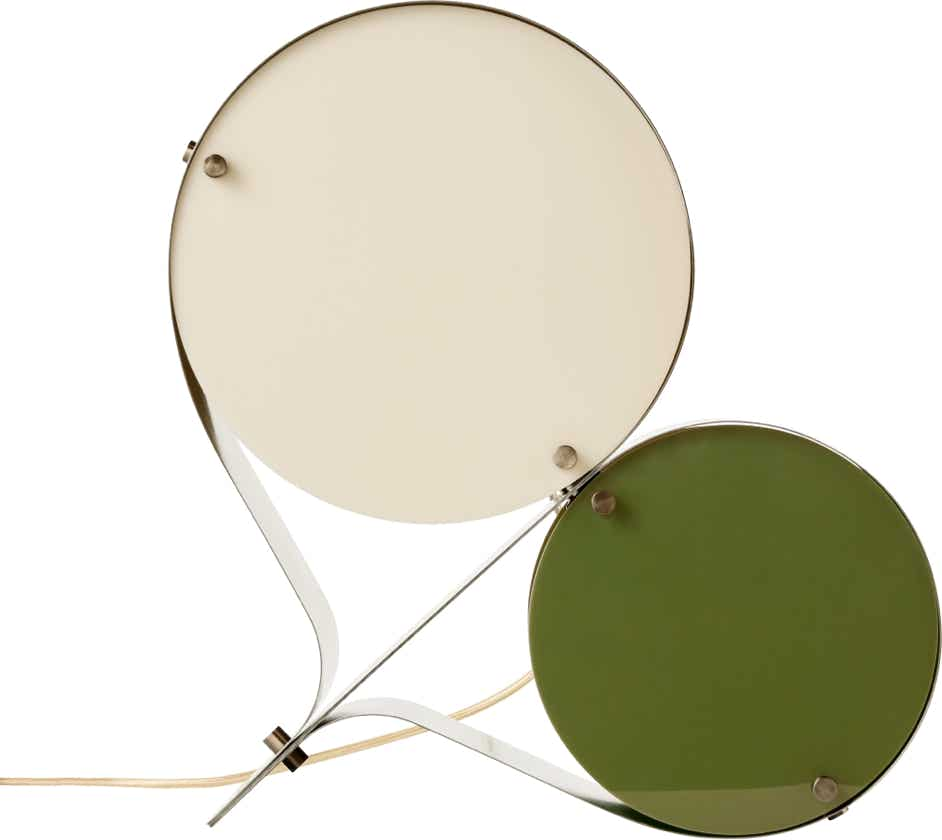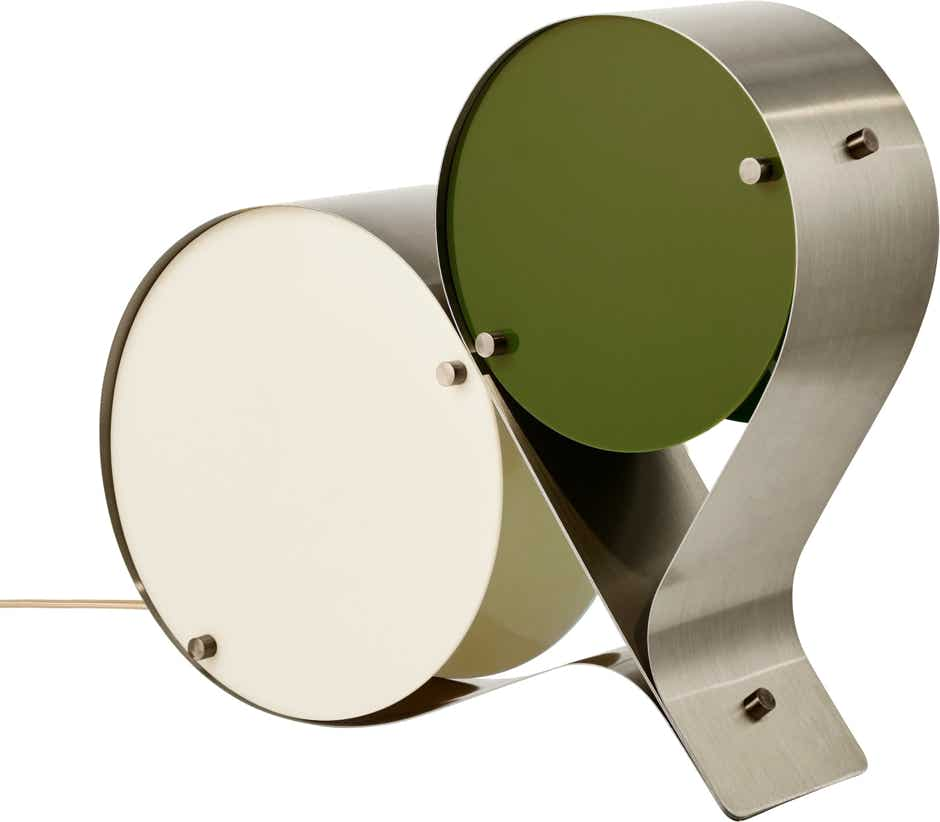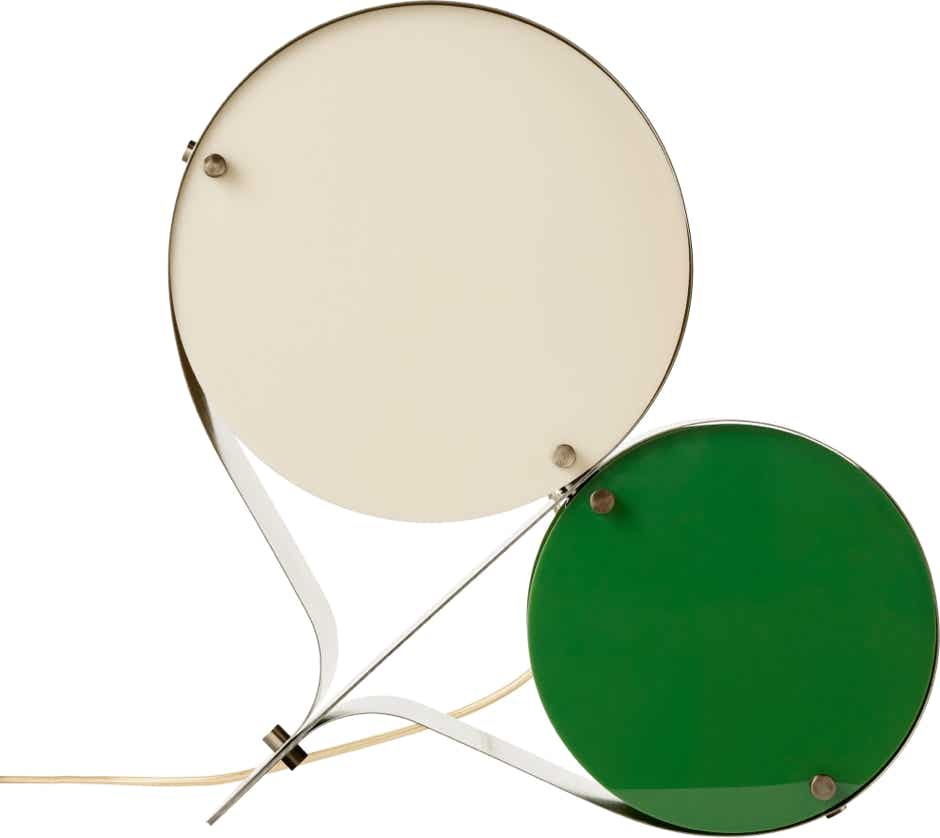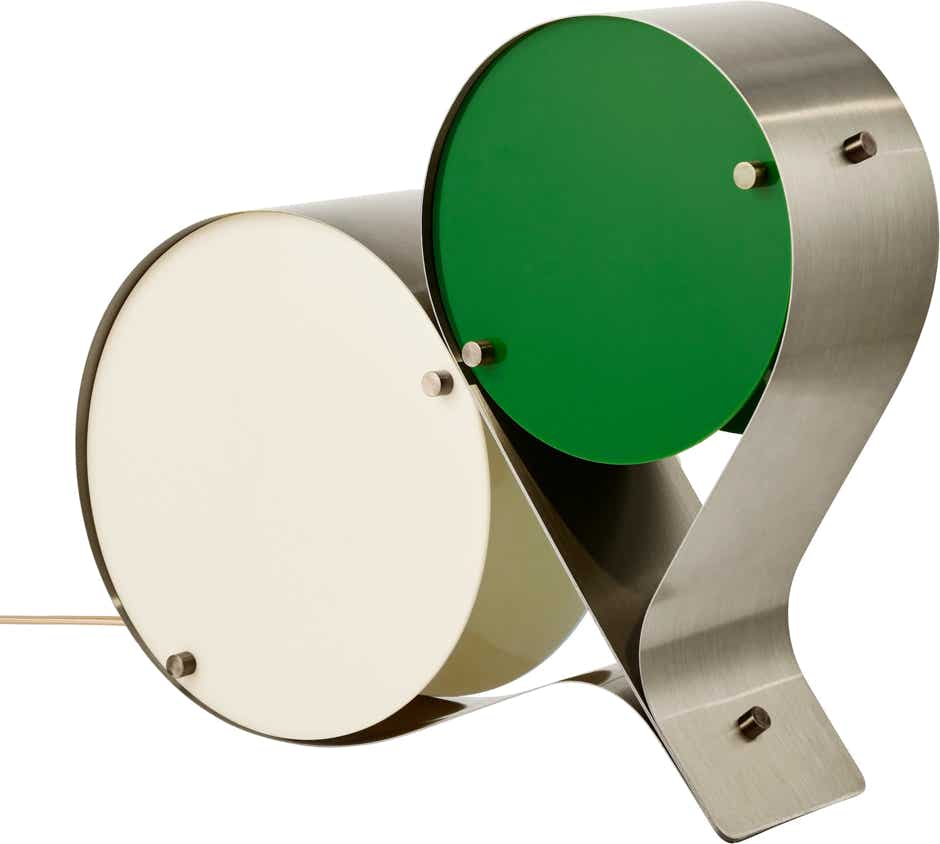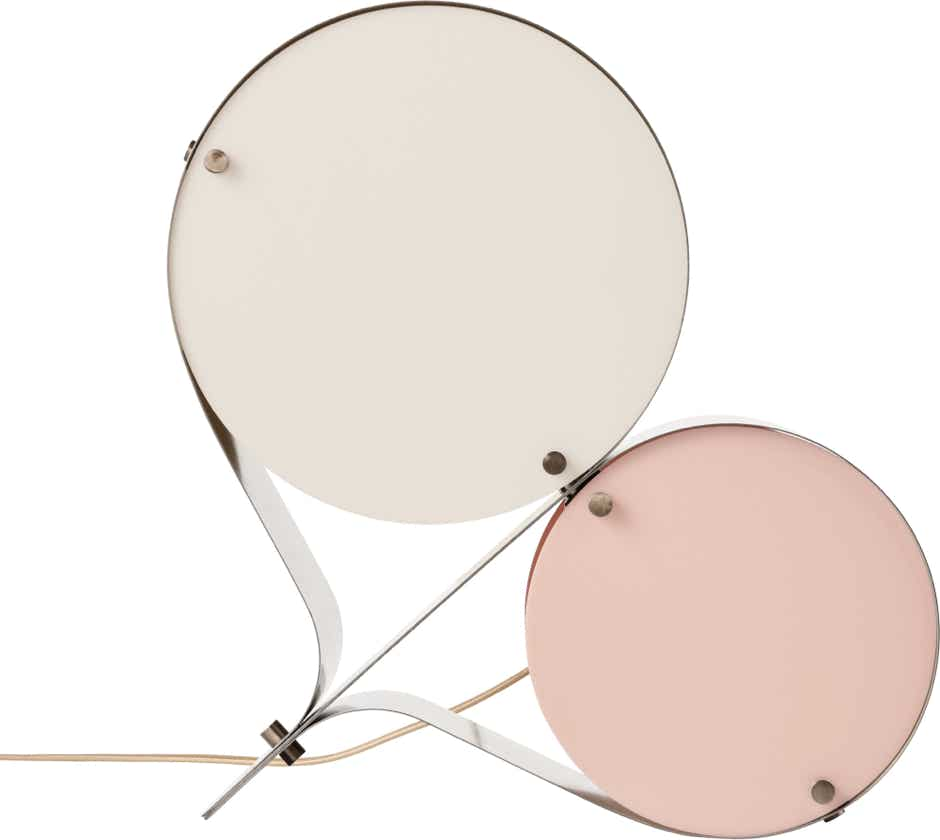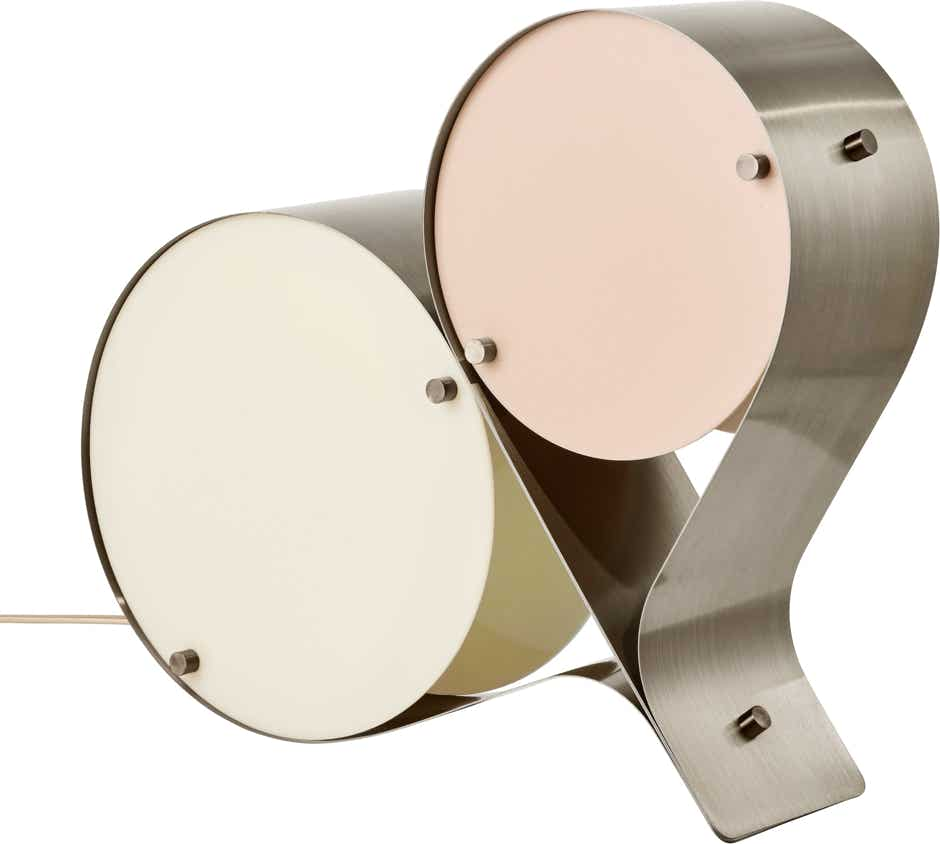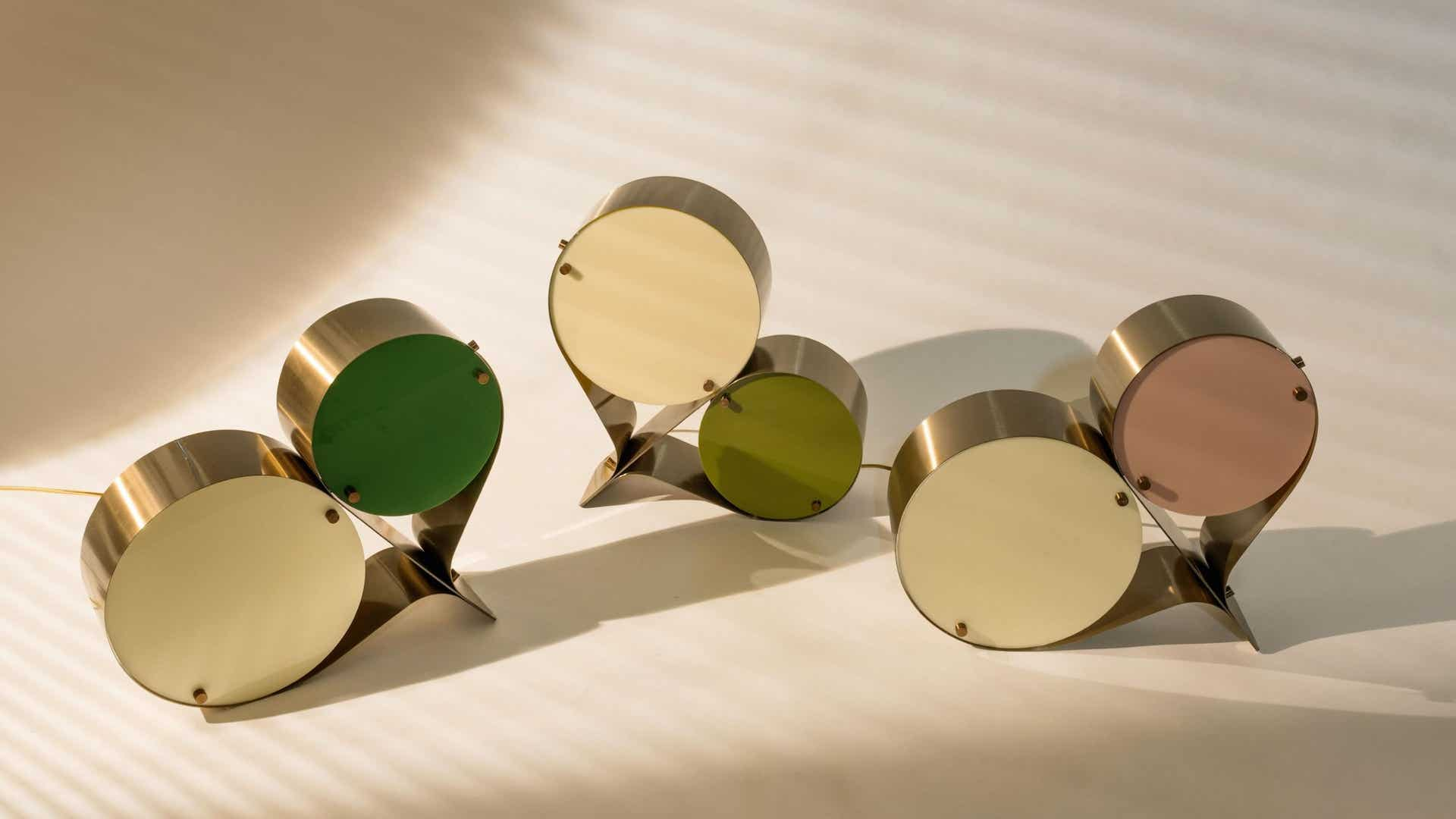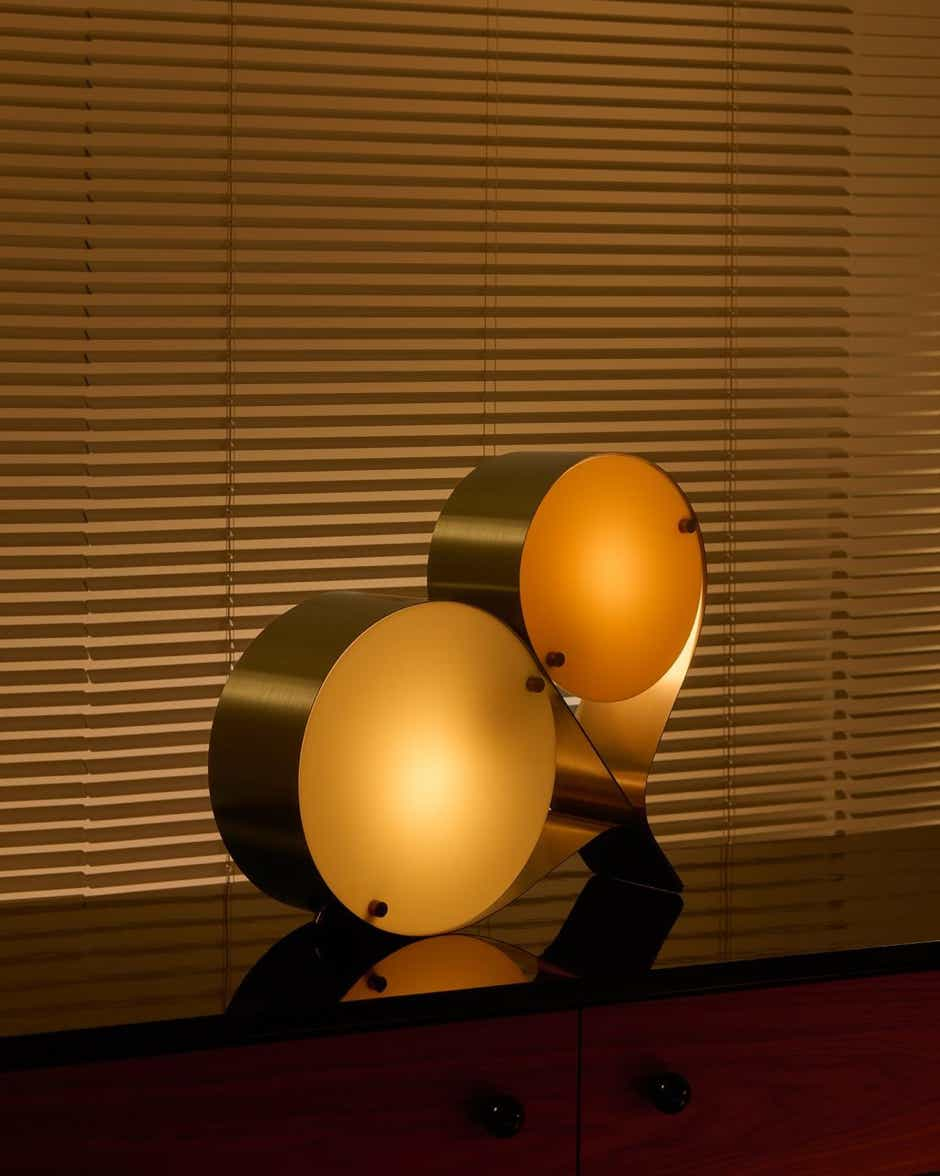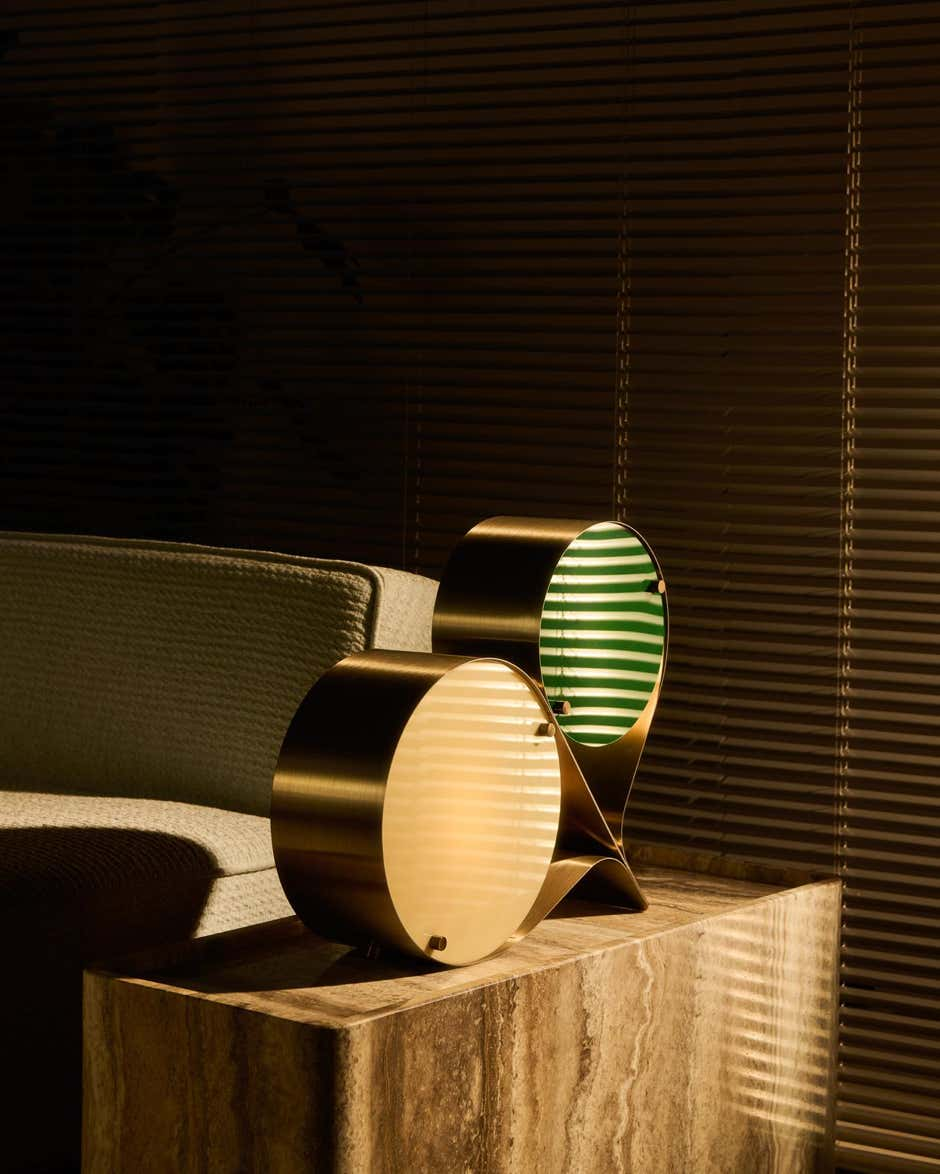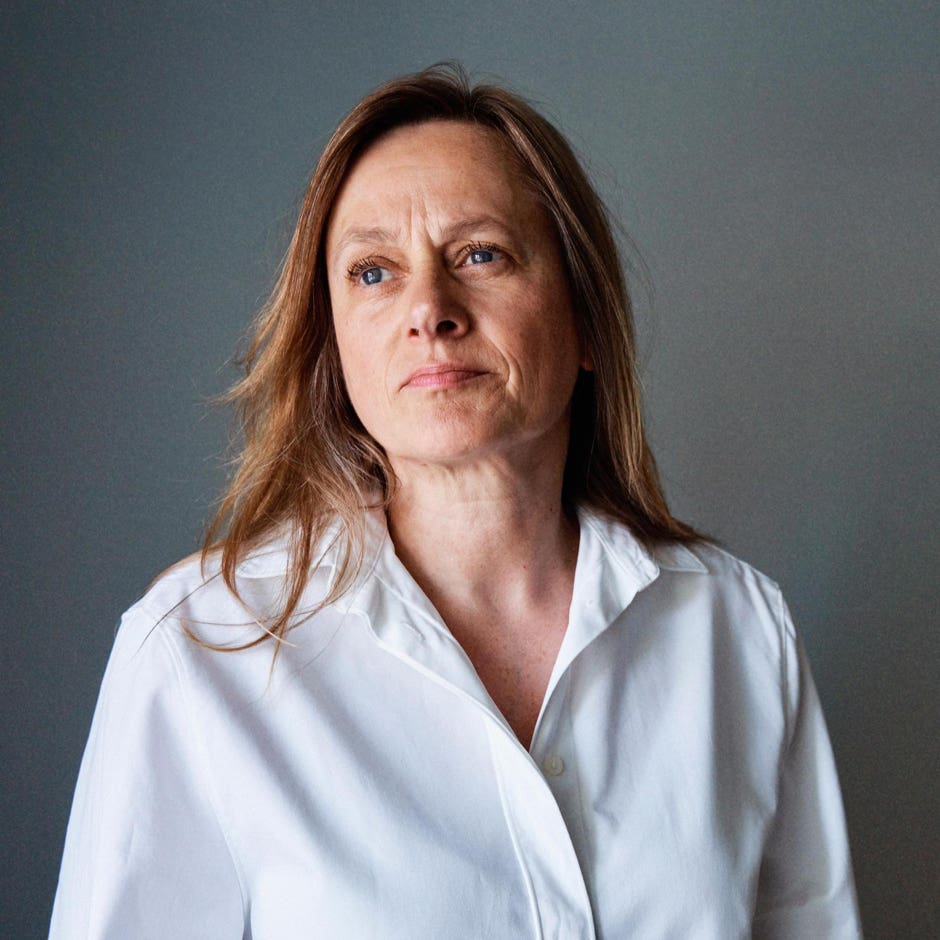Coppia marks the first use of a new material for GUBI - plexiglass, or acrylic, which has become Fonnesberg Schmidt's signature as a lighting designer.
Lighter than glass, this material can be easily cut into almost any shape and molded in a multitude of different colors. Adjusting the translucency of Plexiglas influences the diffusion and intensity of light.
In Coppia, the discs soften and diffuse the light from the central bulbs, creating a beautiful reflection on the steel surface. By combining light, form and material, Coppia rises to the level of sculpture, influencing ambience through color and form.
Although distinctly modern and almost industrial in expression, Coppia's combination of materials and the quality of light through Plexiglas give the design a touch of 1950s and 1960s style.
Simple and minimalist yet playful and decorative, the lamp owes its distinctive character to the meeting of materials and the resulting contrasts - the hard, matte surface of brushed metal against the colorful, glossy finish of Plexiglas.
As usual, Fonnesberg Schmidt took geometry as her starting point for Coppia. Fascinated by natural curves since her days working with porcelain, she wanted to explore the meeting point between the perfection of laser-cutting and the harmony of the circle's shape.
She wanted to explore the meeting point between the laser-cut perfection of the Plexiglas circle and the organic lines formed by a folded sheet of stainless steel.
For Fonnesberg Schmidt, it's important that the lamp arouses the observer's curiosity, encouraging him or her to move the light around and explore it from different perspectives, just as one would with a sculpture.
A solid, sturdy base allows Coppia to be positioned in two orientations, balanced on the larger or smaller disc, and makes it usable as both a table and floor lamp, moving easily from desk to bedside, from shelf to windowsill, as required.
With no glue or other adhesives used in the lamp's construction, Coppia is designed to be disassembled and can easily be separated from its components for recycling or repair - or even to replace the Plexiglas, if a different color is desired.
